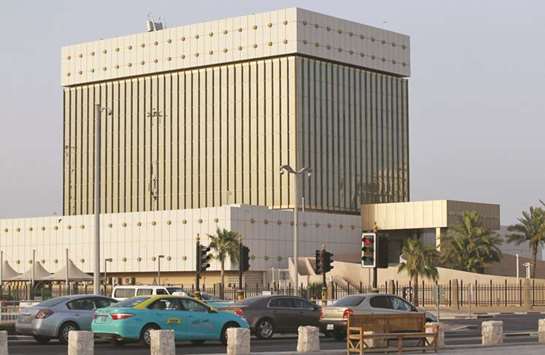The Qatar Central Bank’s actions on interest rate depend on the overall economic and liquidity conditions, the QCB said and noted it examines the impact of rate hike on the banking sector from the perspective of financial stability.
“Due to pegging of Qatari riyal to the dollar, market expects similar actions will be taken by the QCB and the short-term interest rate may move in the same direction,” the QCB said in its 8th Financial Stability Review.
“The rate hike may affect the banking sector’s balance sheet in many ways,” the QCB observed in its analysis on the impact of stress test on Qatar’s banking system.
On the asset-side, the impact could be realised on the bond portfolio as yields may respond likewise to rate hike, resulting in loss of value in the banks ‘trading portfolio. The loan portfolio could see an increase in interest income if there is an increase in the lending interest rate.
However, higher interest rate affects the debt servicing capacity of the corporate and individual sector and accordingly, may result in future erosion in asset quality.
The liability side of banks’ balance sheet could see an increase in interest expense through its rate sensitive liabilities. In particular, banks external borrowing becomes costlier.
Since the banking sector’s investment portfolio in trading securities is lower, the impact is expected to be limited.
Therefore, the QCB said it has considered the effect of higher interest rate through higher corporate and individual sector non-performing loans, and accordingly, the higher provisioning requirement and the parallel shift in interest rate in rate sensitive assets and liabilities.
Since the banking sector has higher rate-sensitive liabilities than rate-sensitive assets in the shorter-term time bucket (up to one year), higher interest rate will reduce the net interest income; and, higher cost of funds on external borrowing resulting increase in cost of funds.
The QCB’s “stress result” shows that keeping all other parameters at baseline (capital to risk-weighted assets ratio – CRAR, profits, interest income kept constant at December 2016 levels, while stressed parameters are allowed to change), profitability declines, but remains positive for most of the banks. “Higher NPLs bring down the capital ratios due to higher provisioning, however, remains around the minimum requirement overall. The banking sector, by widening their income stream and carefully monitoring their credit portfolios can weather the impact going forward,” the QCB said.
In order to examine the impact of an adverse movement in interest rates, earnings at risk (EAR) exercise has been conducted. For a 100 basis points (bps) increase in interest rates, at the aggregate level, net interest income (NII) of banks was found to decline by QR3.9bn at end-December 2016, the QCB noted.

Cars drive past the Qatar Central Bank building in Doha on June 6. A higher interest rate affects the debt servicing capacity of the corporate and individual sector and may result in future erosion in asset quality, the QCB said in its 8th Financial Stability Review.



